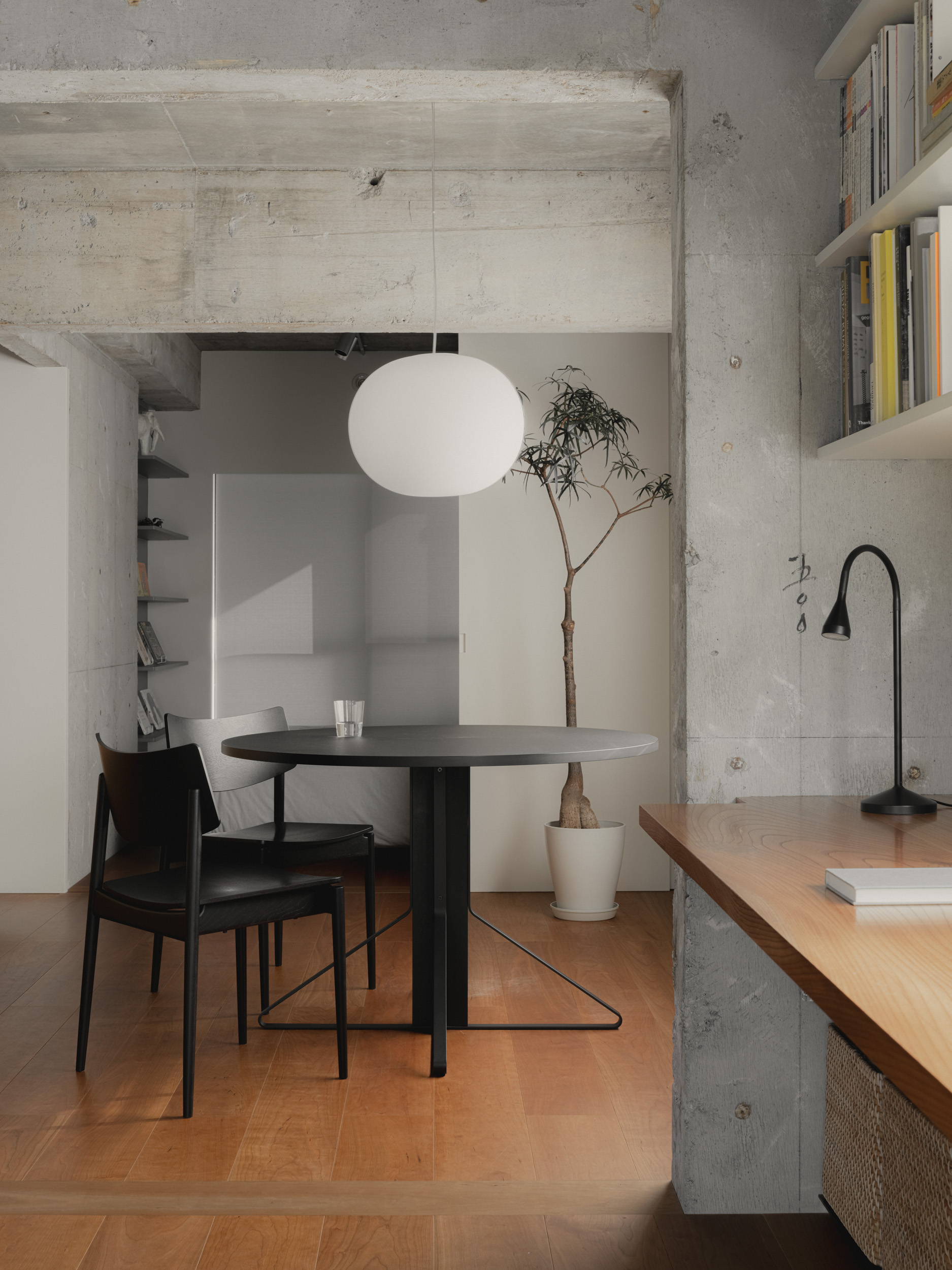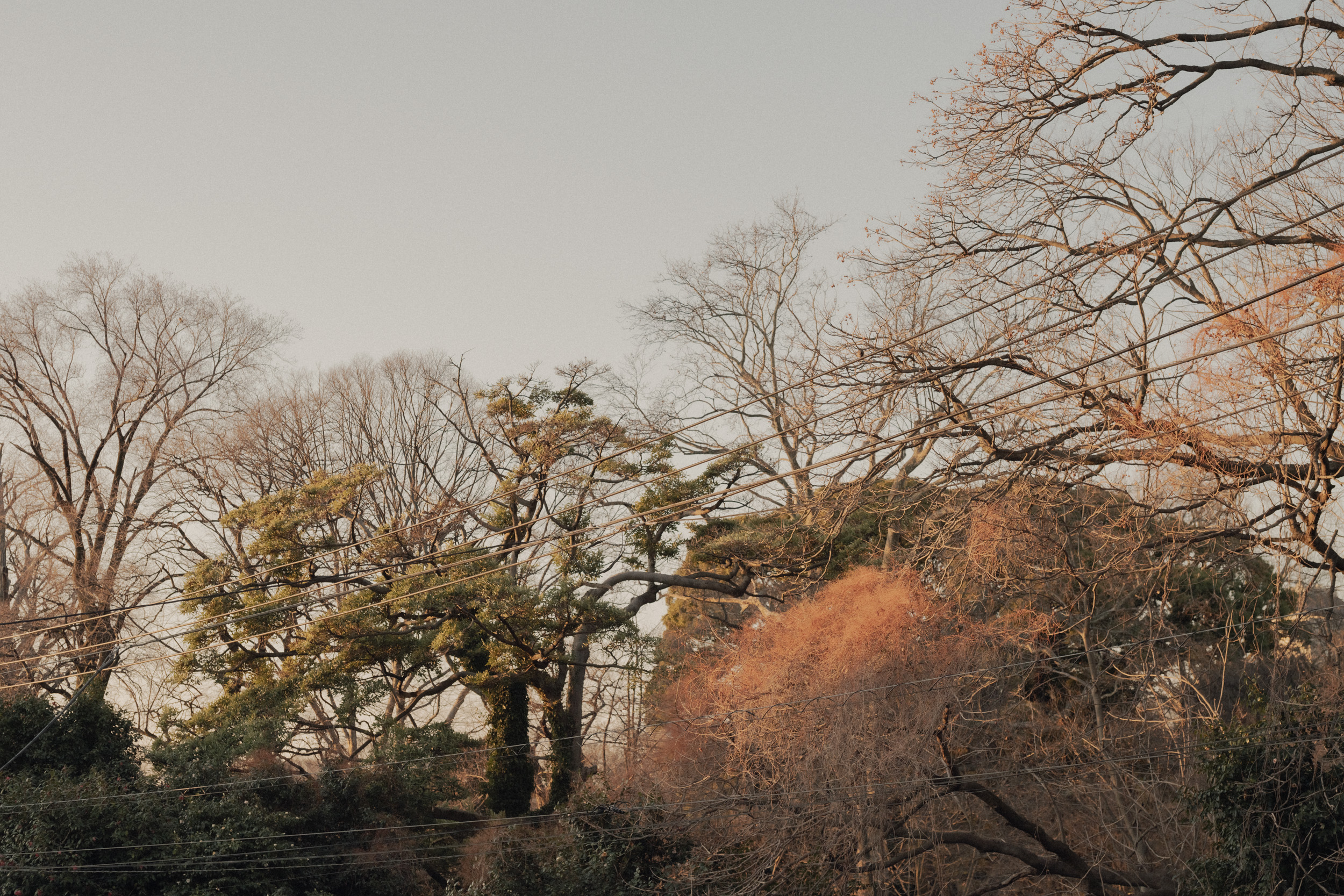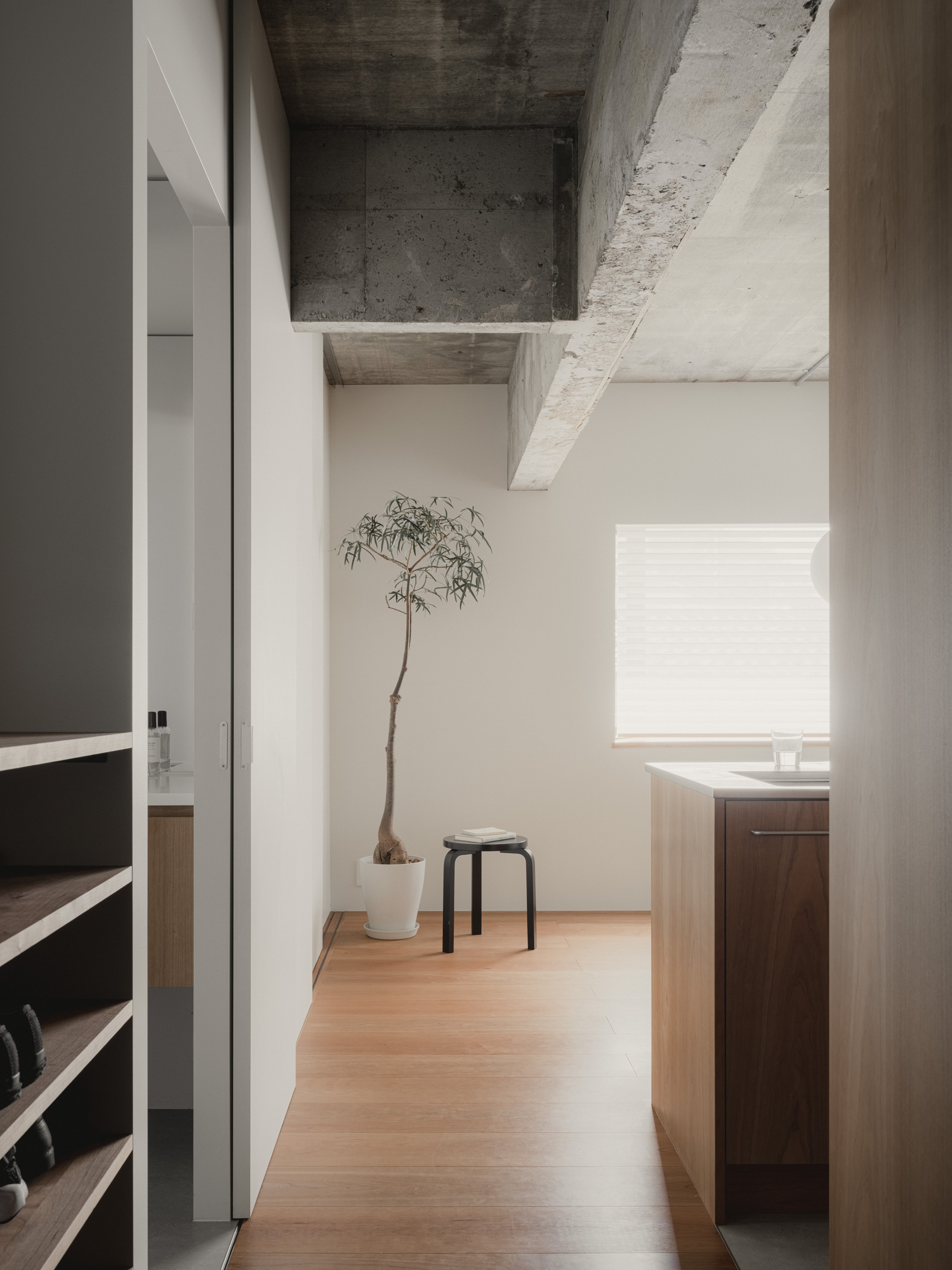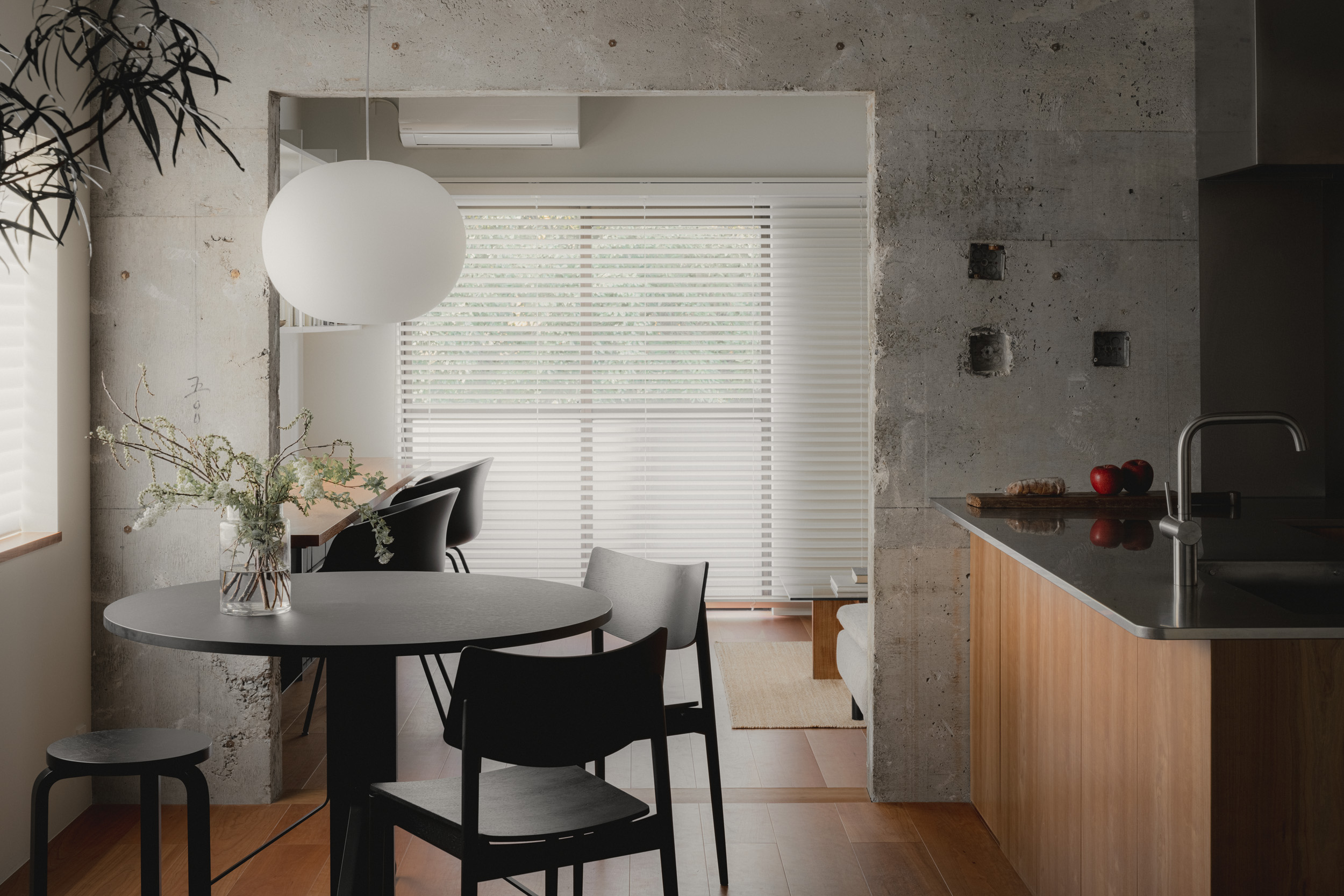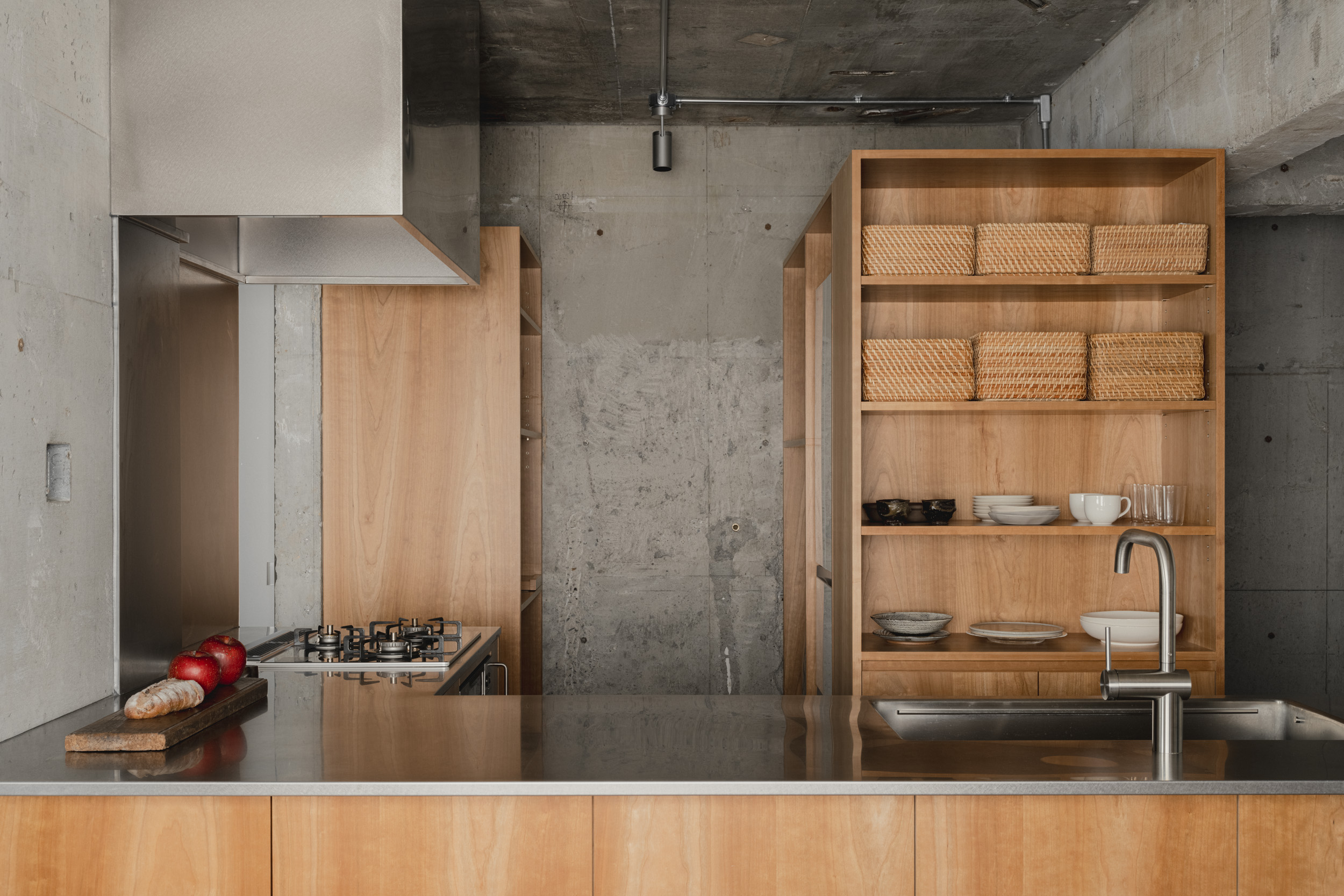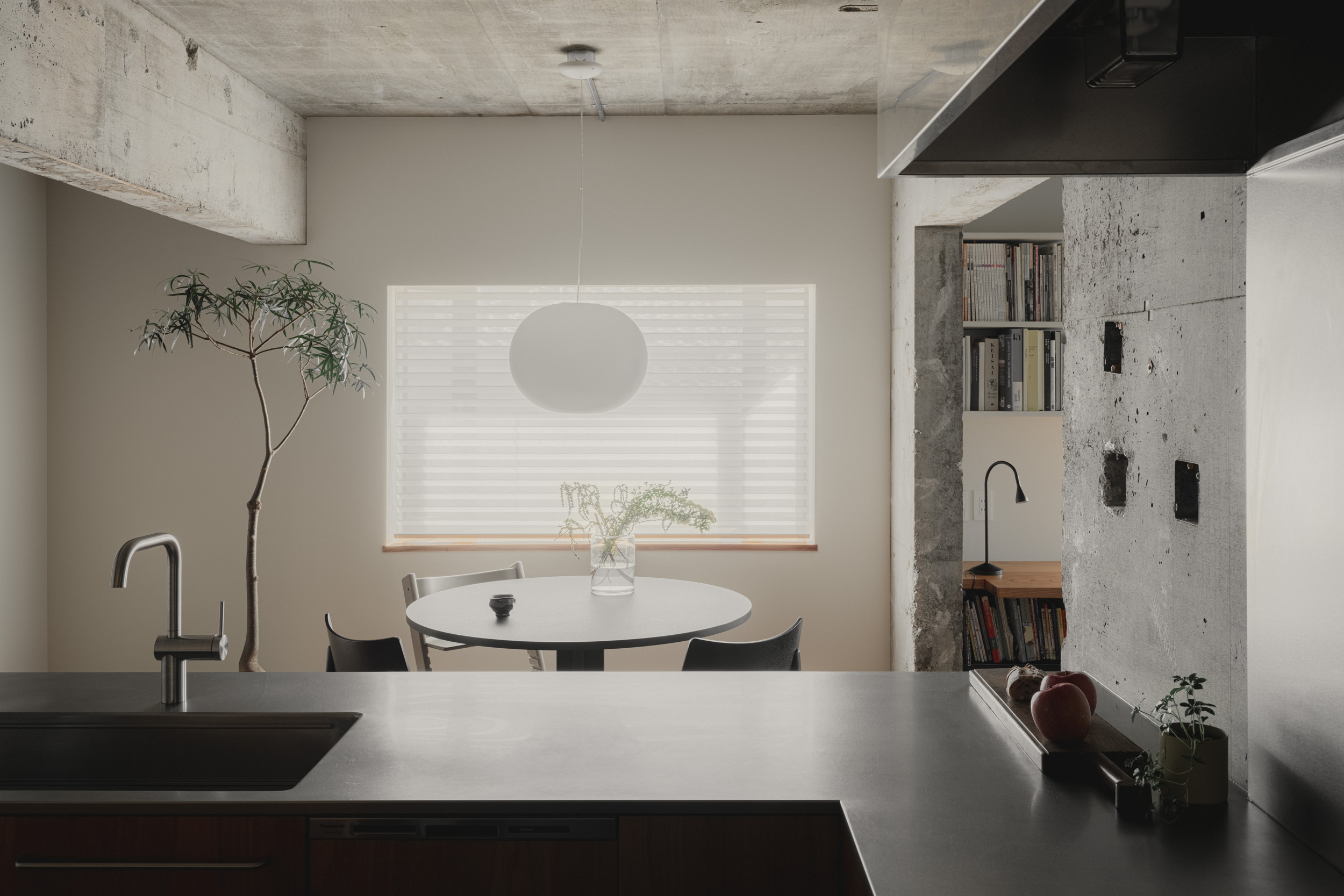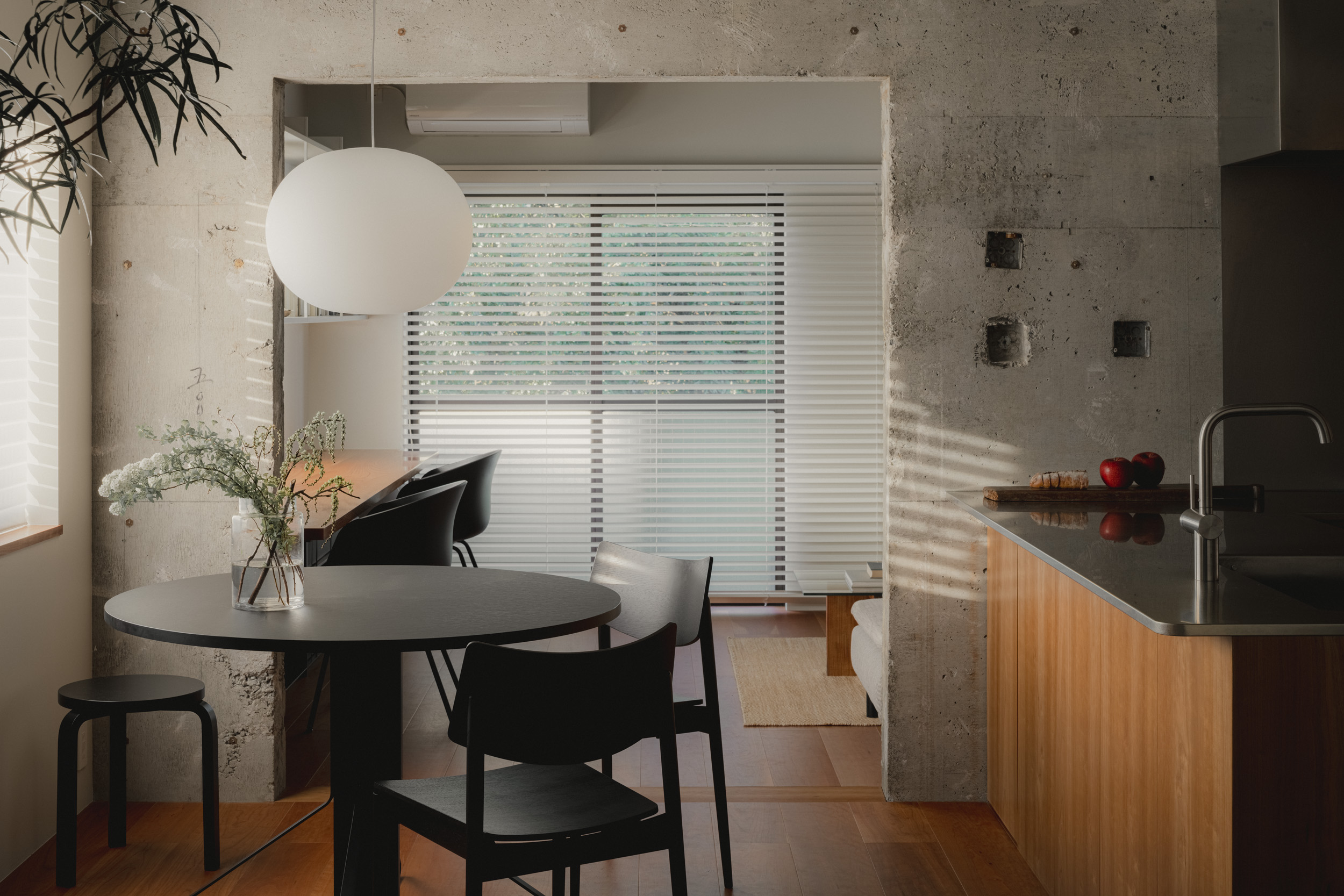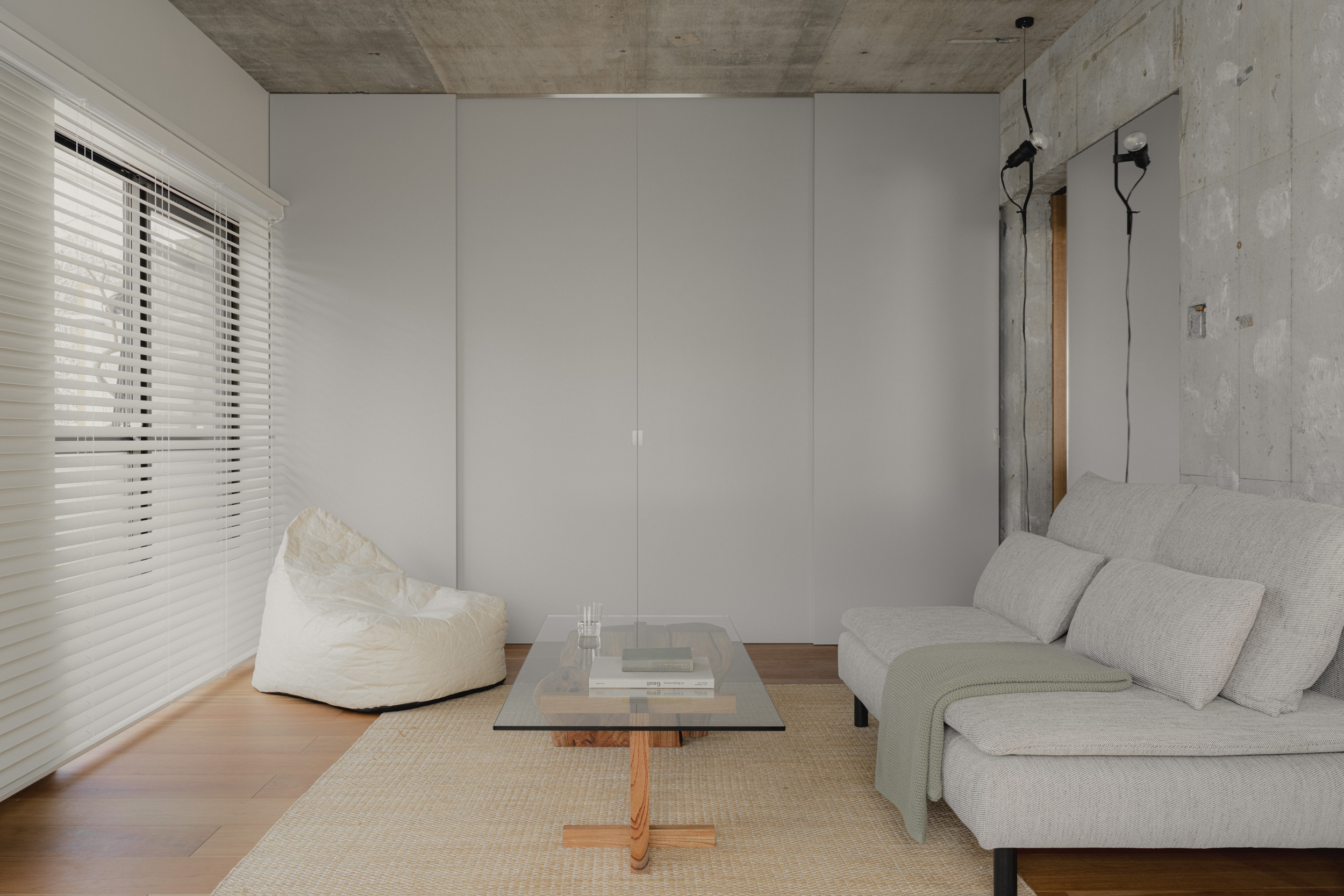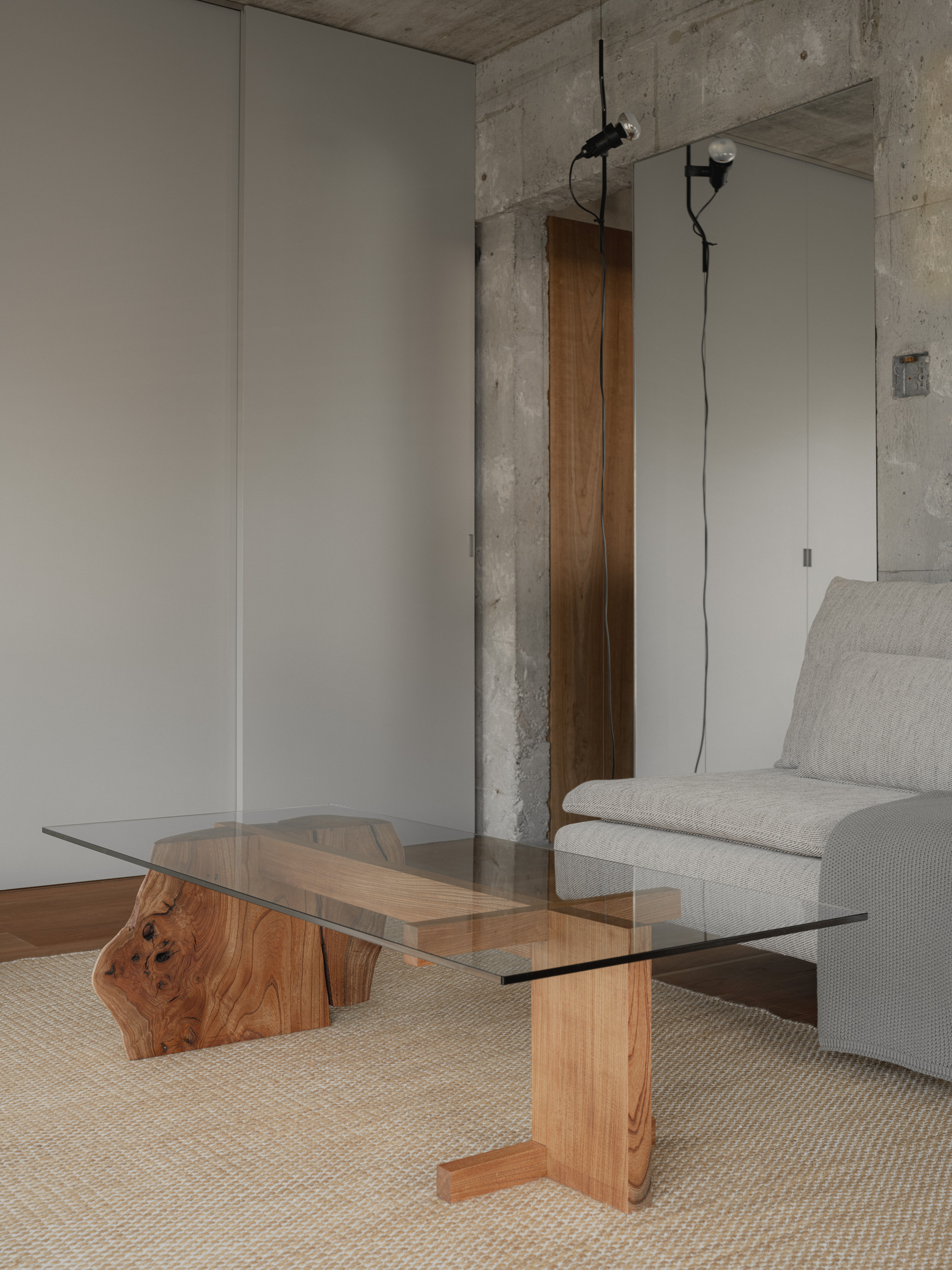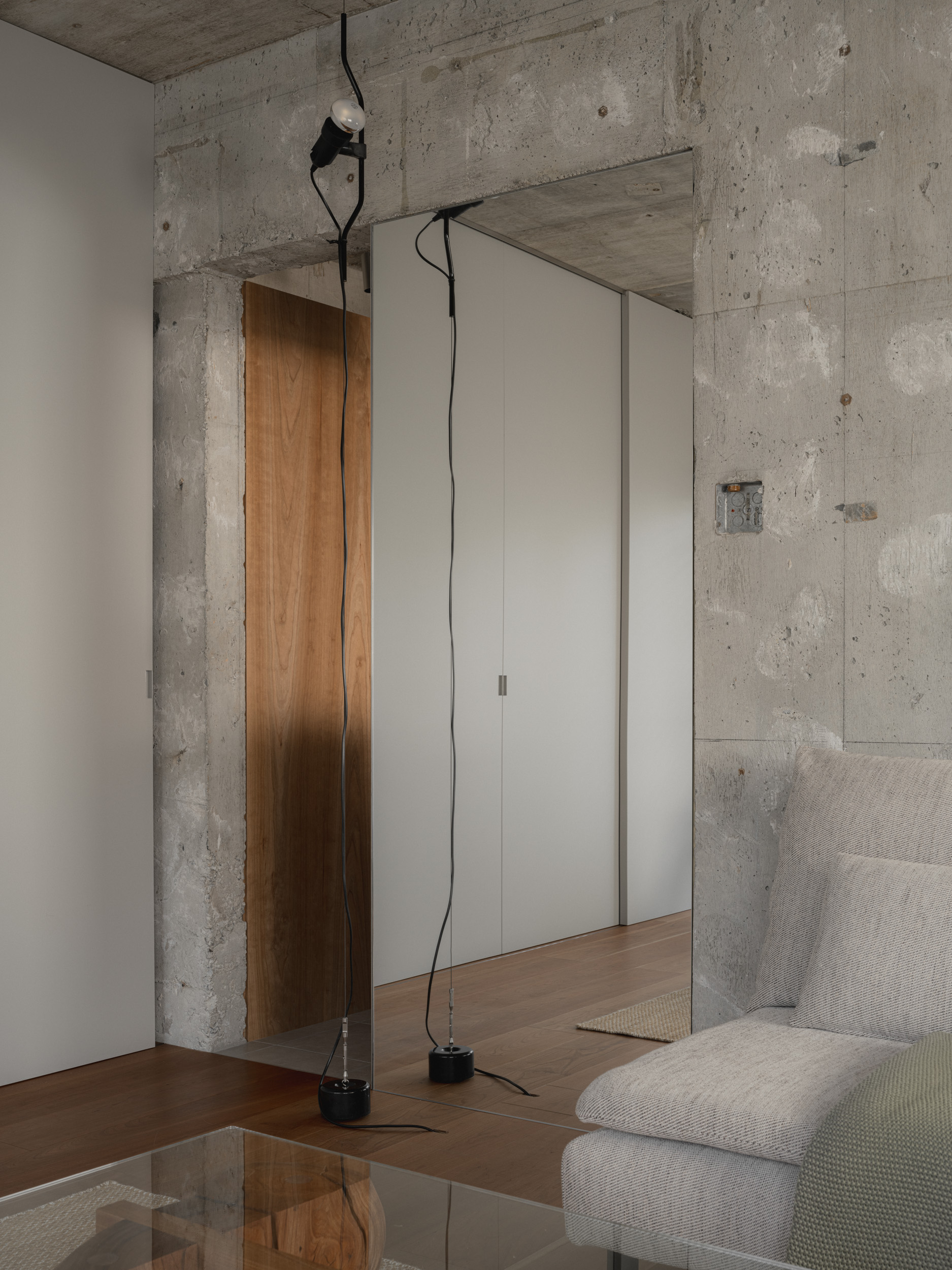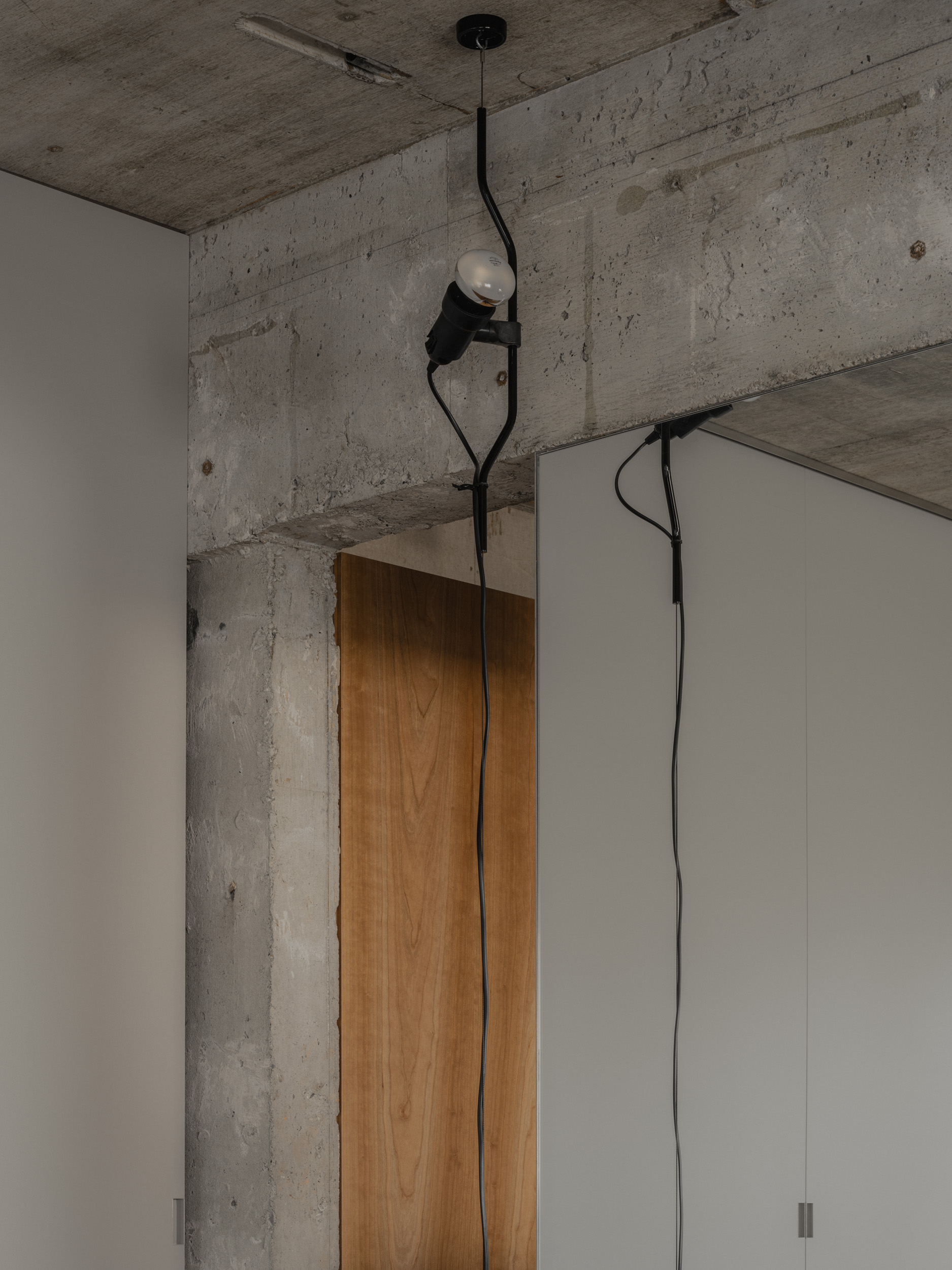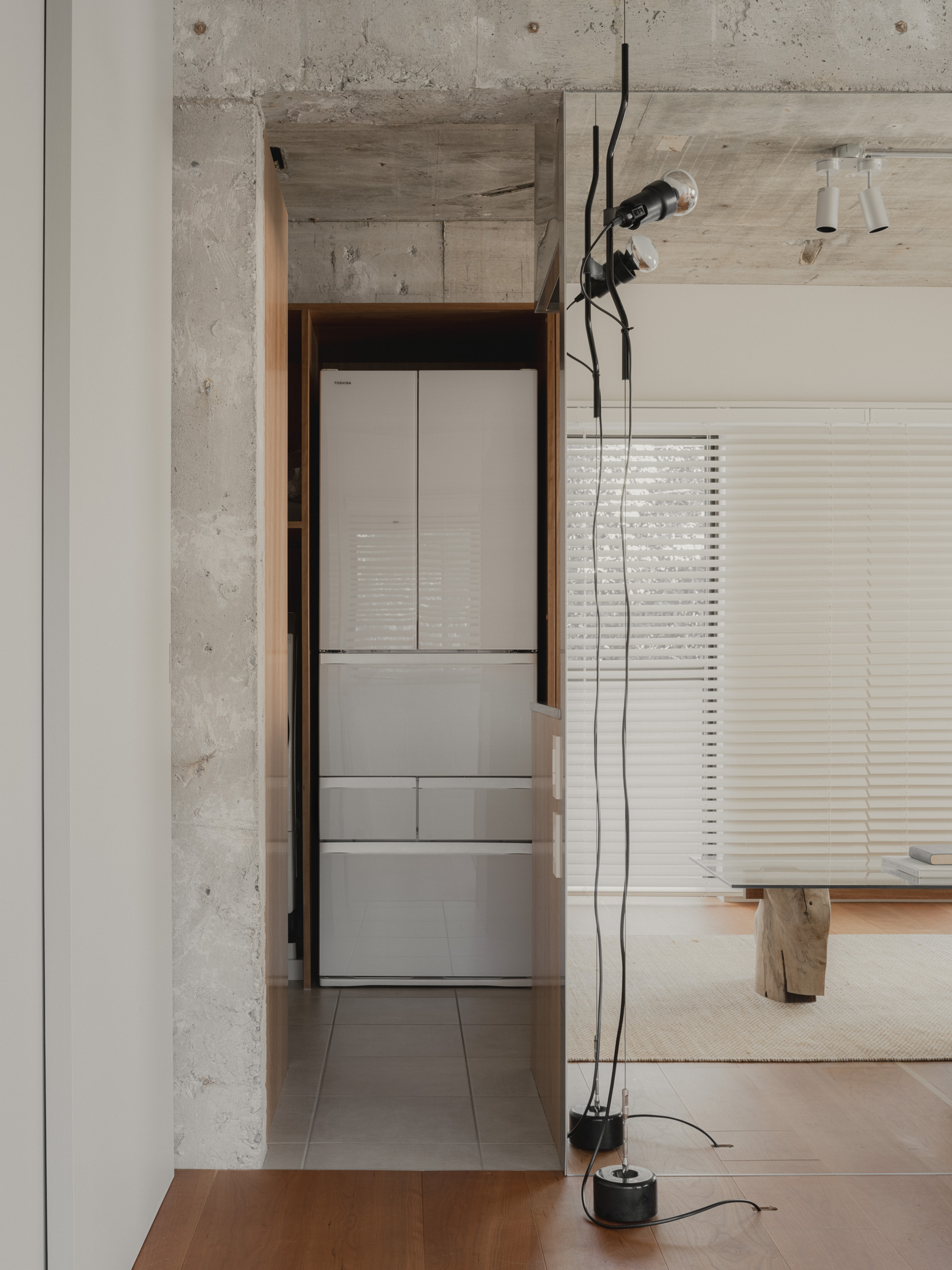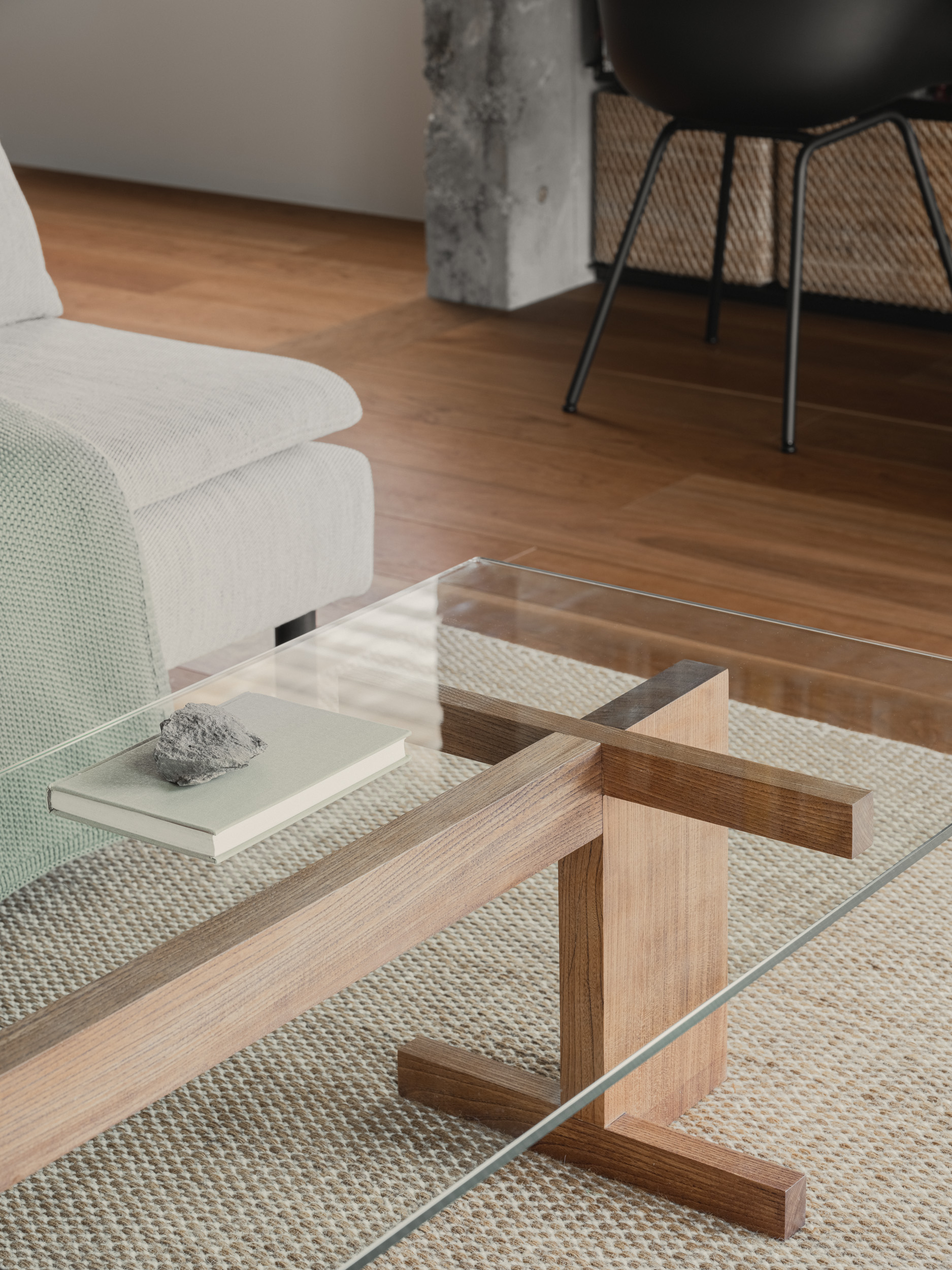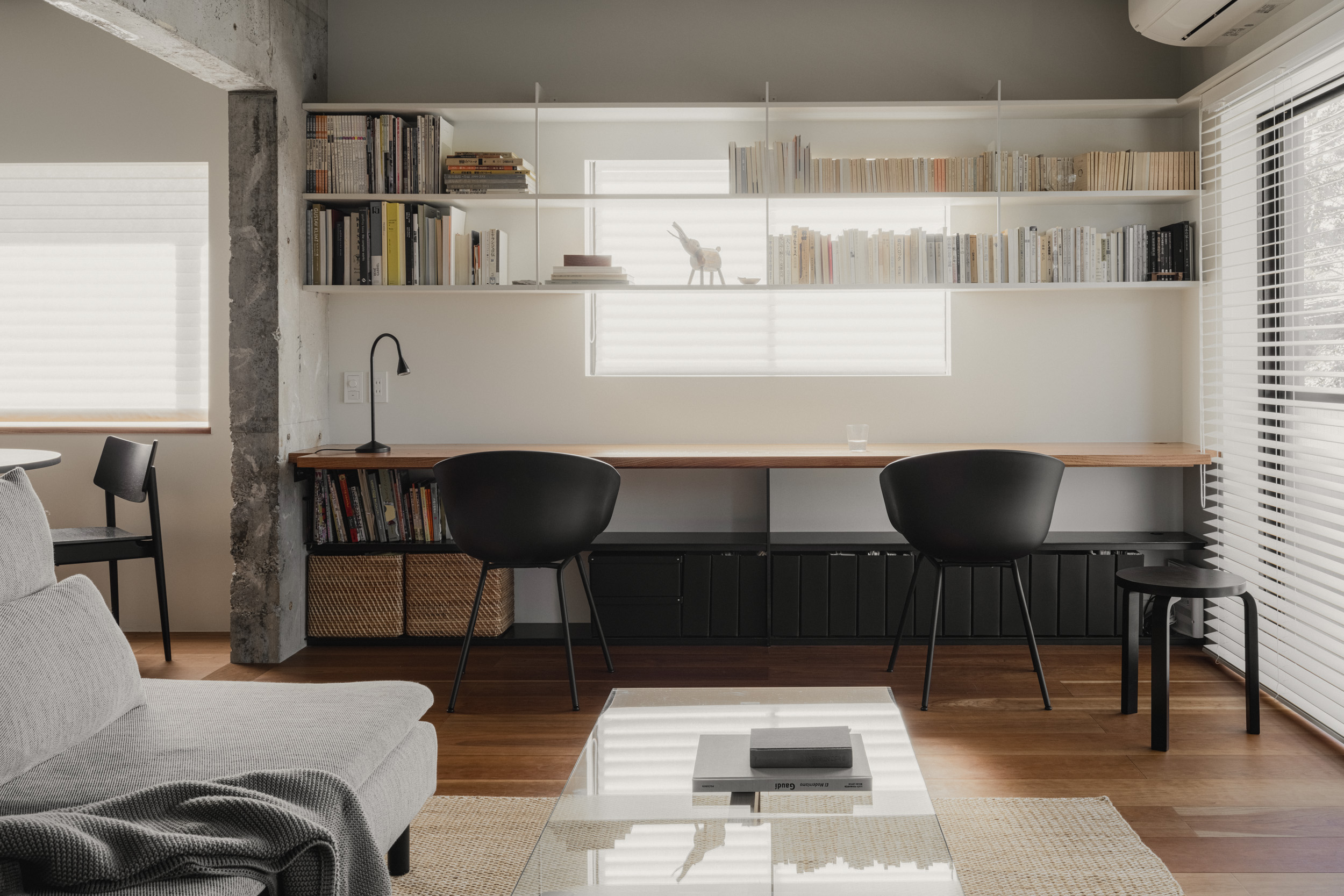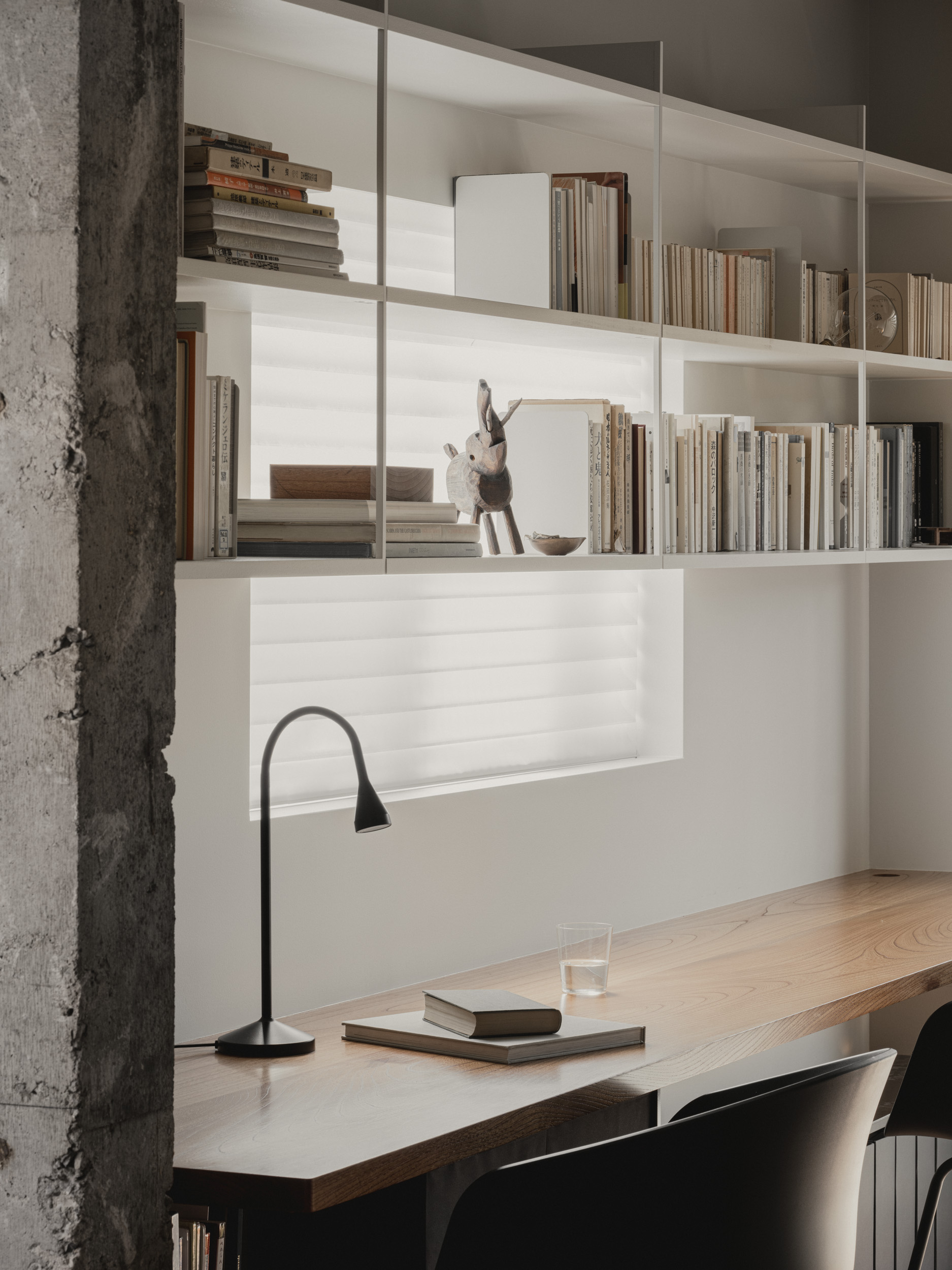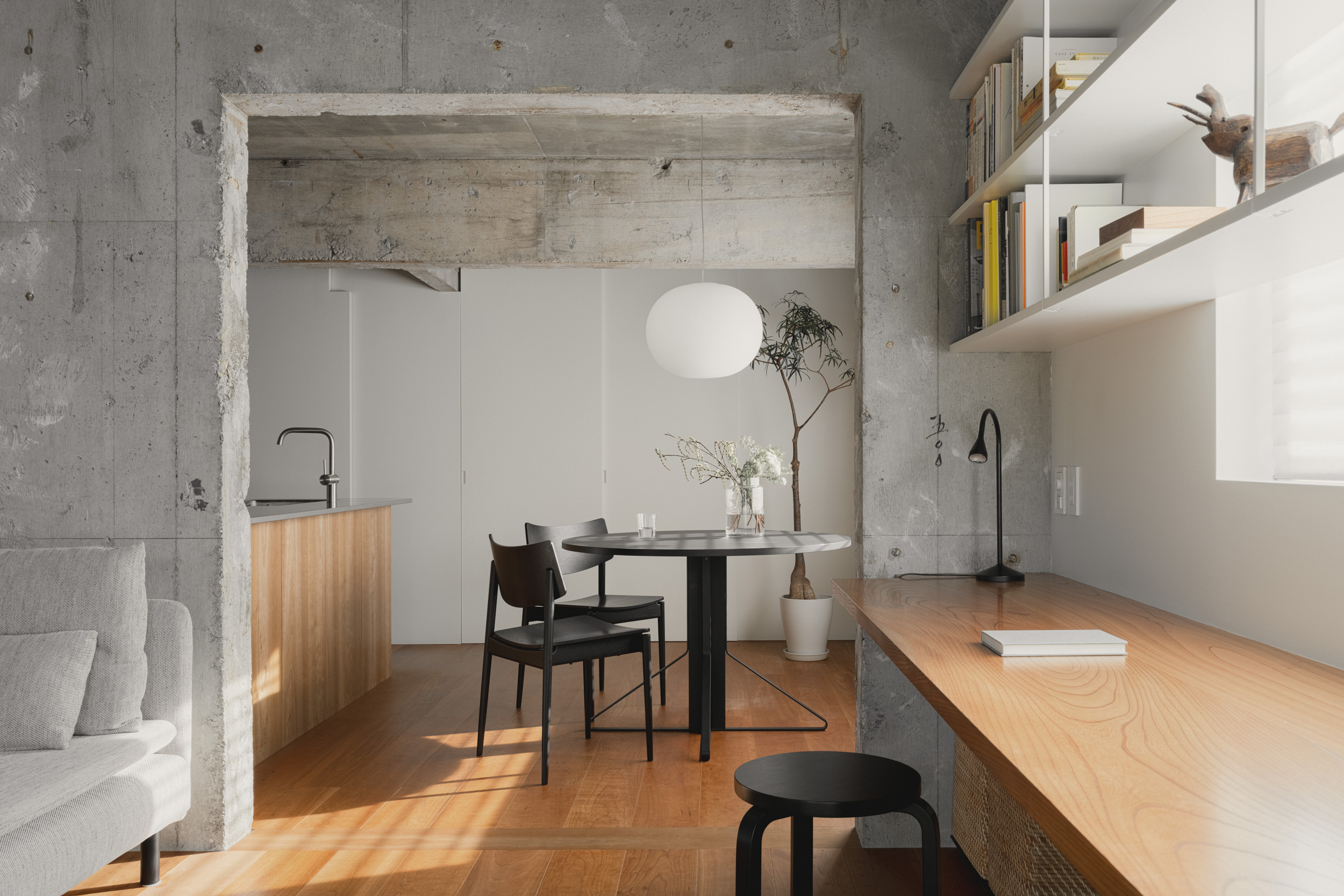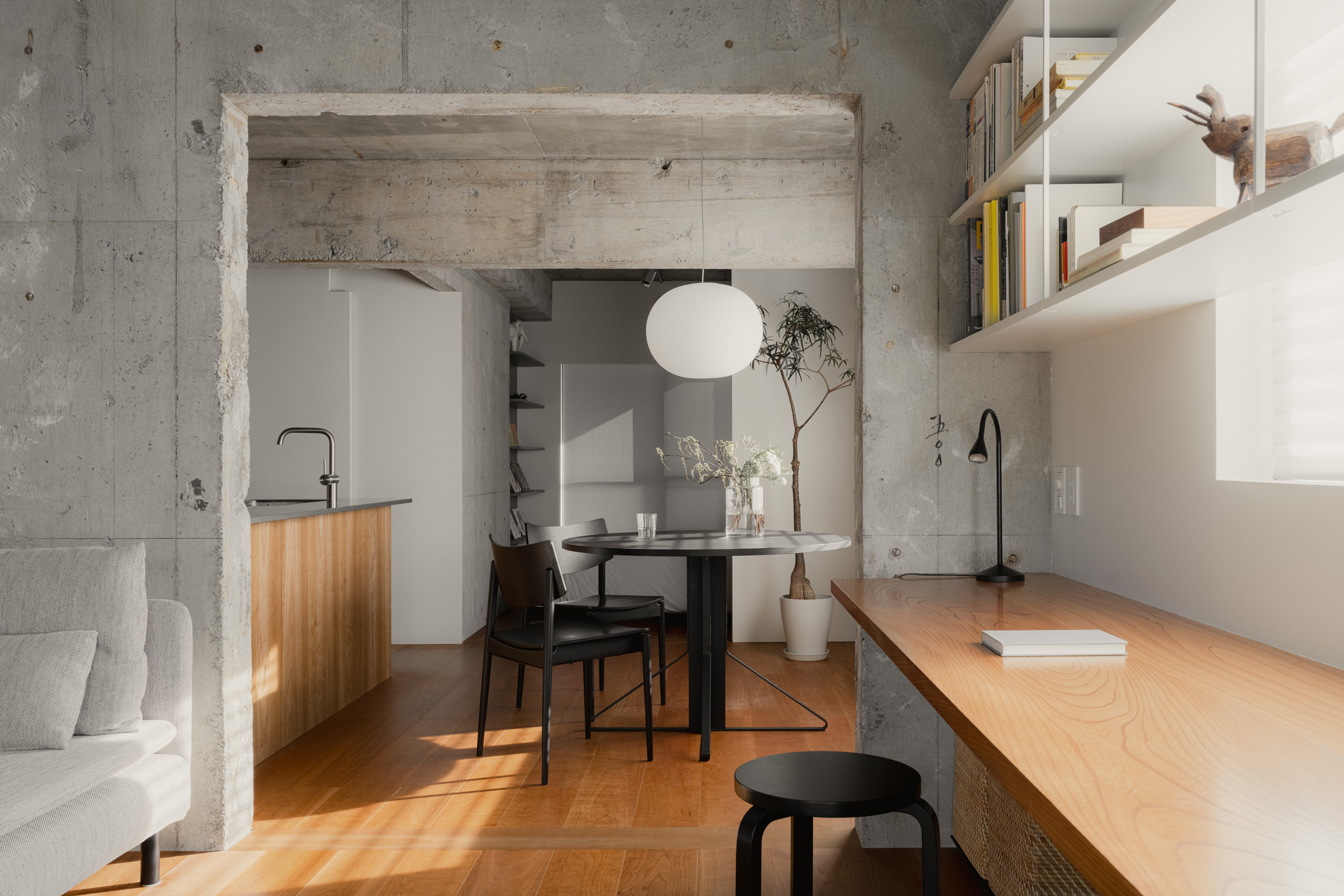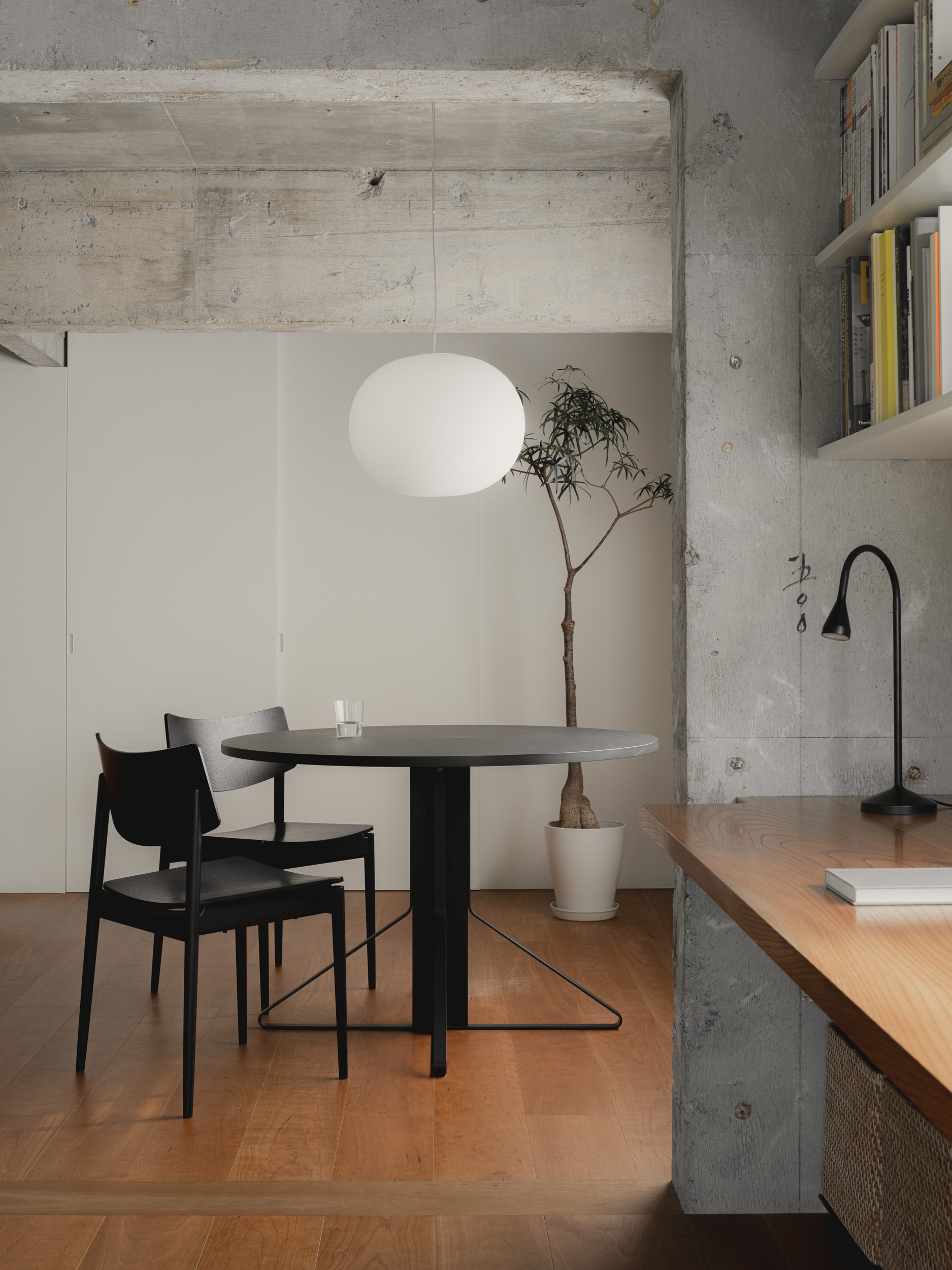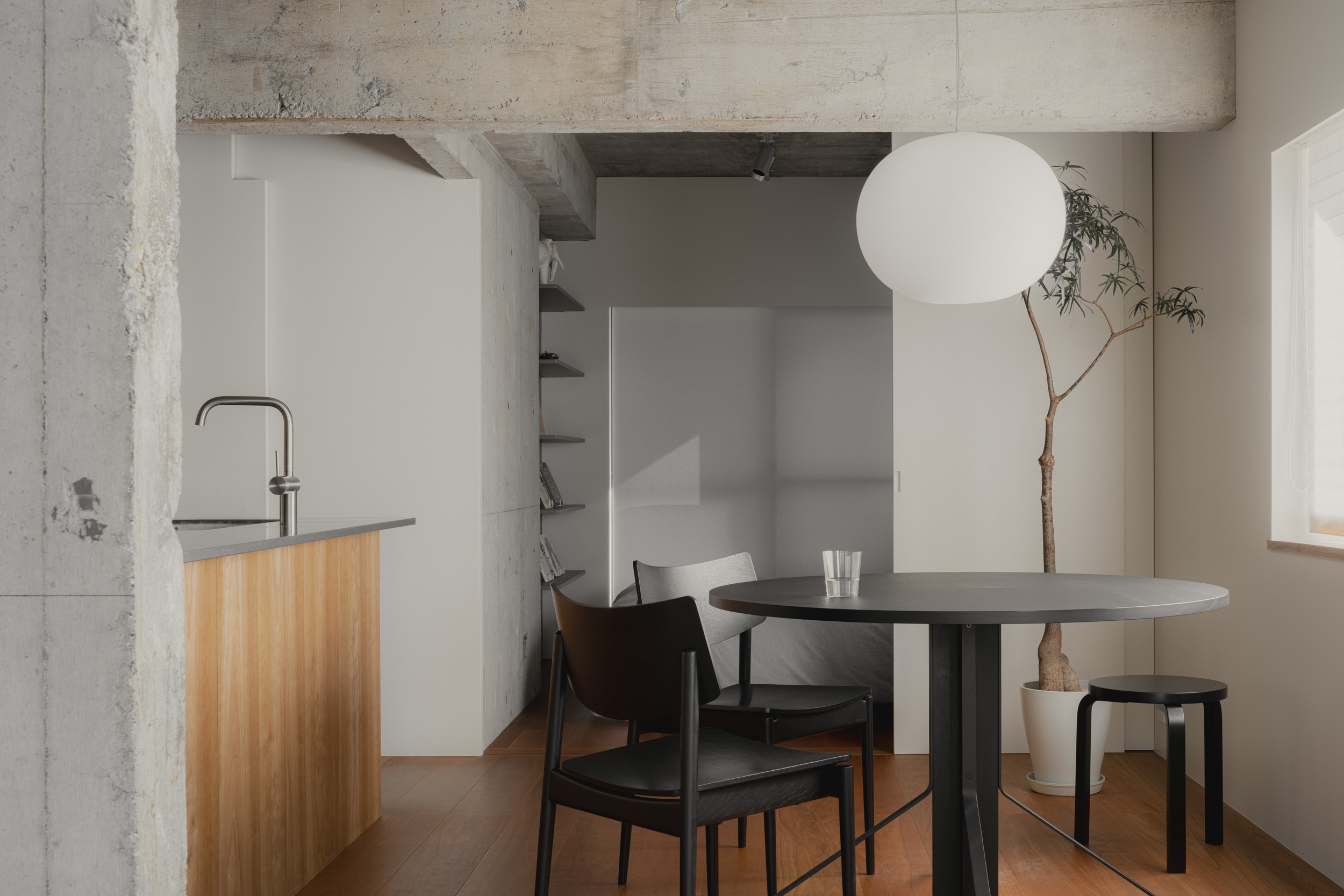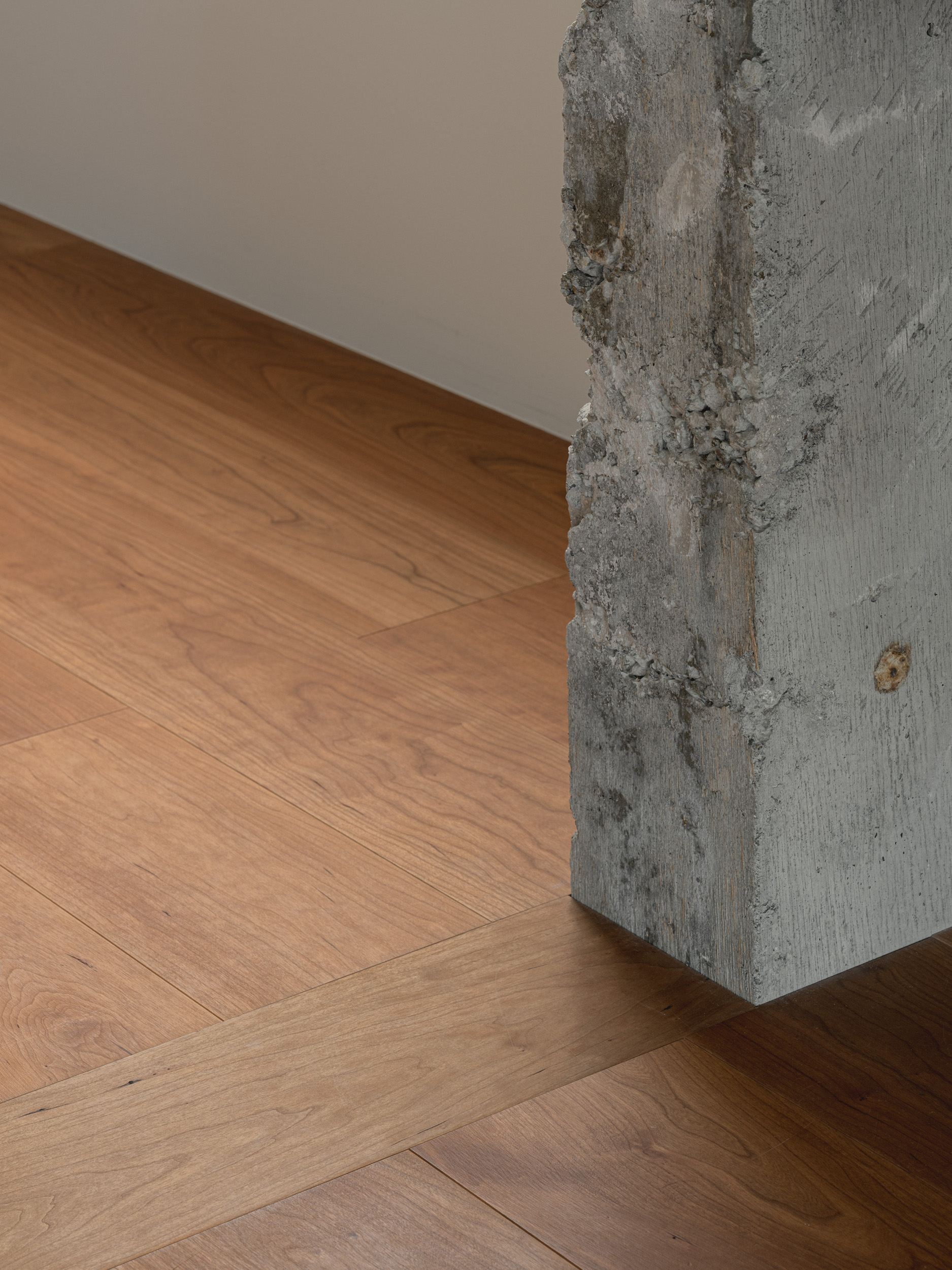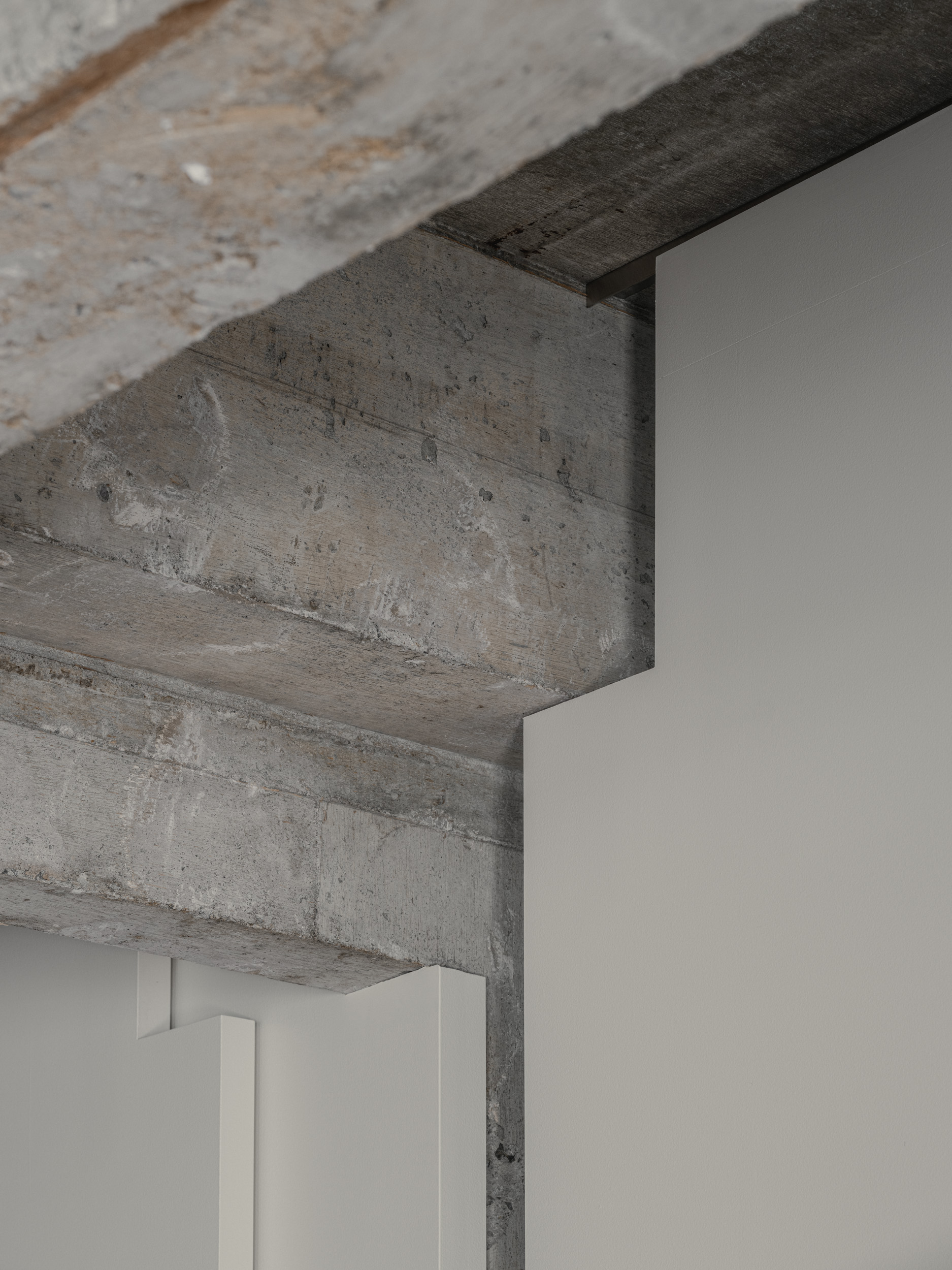室内面積約57㎡のマンション住戸のリノベーション計画。
コンパクトな住戸ではあるが、角部屋であると共に大きな緑地にも面しており、小さいながらも豊かな生活像を思い描ける住戸であった。
本建物はRC壁式構造であり、プランニングに制限はあるが、大きな柱や梁が無いため目に見える構造体の厚みが小さく、コンパクトな住居のスケール感にとてもフィットしていた。スケルトンになった空間を見ながら、そのような実感をもとに、内装デザインにおいても構造体と丁寧な関係をつくるように設計をした。
工事を簡素化するために、間仕切壁はできるだけ作らないようにし、主に造作家具と建具でプランを構成するように計画した。この工夫はコンパクトな住居に軽やかさと広がりを与えることにも繋がっている。
夫婦と小さな子供が暮らすこの家では、キッチンが生活像の中心にあった。
キッチンをプランの中心に据え、キッチンカウンターに立つとダイニングやデスクスペース、寝室に目が届くよう意図した。また、キッチンの奥が行き止まりにならないようにリビングへ通じる導線を設けている。回遊性のある導線は小さな住居を狭く感じさせない工夫にもなっている。
素材選定においては、約50年前に打設された少し荒っぽいコンクリートとのコントラストを作るように、木目がきめ細やかで肌触りの良いチェリー材をメインの材料としている。
また、長いデスクやコーヒーテーブルにはケヤキの無垢板や端材をつかい、窓先の緑地のケヤキ林とささやかな関係を持てるようにしている。
プラン上作らざるを得なかったコンロ裏の壁は大きな鏡貼りとすることで存在を消しつつ、視覚的に奥行きをあたえ、窓先の豊かな緑を住居内に取り込む装置にもなっている。
This project is a renovation of a condominium unit with an area of approximately 57 square meters located in central Tokyo, Japan. Although the unit is compact, it is a sun-filled corner room and faces a large botanical garden, offering the potential for a rich living environment despite its small size.
This building is a 50-year-old concrete structure. We removed all the old finishing materials, exposing the concrete framework. In this project, we aimed for an interior design where the contrast and juxtaposition of the concrete structure and new materials beautifully blend together.
We have structured the plan primarily around furniture and sliding doors, avoiding creating unnecessary walls wherever possible. This strategy has imparted a sense of lightness and expansiveness to this small residence. Simultaneously, it has rationalized and simplified the construction process.
In this house where a couple and their small child live, the kitchen was at the center of their living image. The kitchen was placed at the center of the house so that when one stands at the kitchen counter, one can see into the dining room, desk space, and bedrooms. In addition, to avoid a dead end at the back of the kitchen, a path to the living room was provided. A plan with circulation flow provides a sense of expansiveness to a small residence.
In the selection of materials, cherry wood, with its fine grain and pleasant texture, is used as the main material, with the intention of creating a contrast with the rough concrete frame that was made 50 years ago. Also, in correspondence with the zelkova forest visible through the windows, we used zelkova wood for the long desk and coffee table. The zelkova wood used for the coffee tables was recycled from old materials to create the design. A large mirror is placed on the wall behind the kitchen to minimize its presence, visually enhance depth, and serve as a device to bring the outdoor greenery into the interior of the house.

